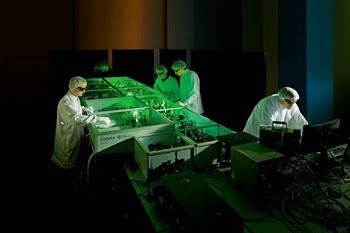Researchers in Lithuania have developed an ultrashort-pulse laser that could eradicate nuclear waste and decrease the decay period from tens of thousands of years to seconds, hours, or months, depending on the material, they said.
The Single Cycle Femtosecond high-intensity laser system (SYLOS), jointly produced by Vilnius, Lithuania-based companies Light Conversion and Ekspla, is a high-intensity, ultrashort-pulse laser that has the potential to solve the nuclear waste management problem. Scientists said the peak power of SYLOS exceeds the power of a nuclear plant by thousands of times, and that impulses of this kind can be applied both to research and to nullify the impact of nuclear waste.

Arturas Plukis, head of the Experimental Nuclear Physics Laboratory at the Center for Physical Sciences and Technology in Vilnius, said the process of producing power via nuclear energy creates radioactive nuclear waste as a by-product, which is then stored in sealed containers.
"Currently, the disposal of nuclear waste is comprised of either storing the waste in containers on above-surface level or burying them underground, depending on the decay period of the radioactive material. This method is raising safety concerns, as some of the waste is disposed not too far from densely populated areas, and highly radioactive waste has to be safely stored for up to tens of thousands of years," he said.
Ekspla officials said the initial idea that lasers of this kind could potentially solve the nuclear waste disposal problem was raised by Gérard Mourou, the 2018 recipient of the Nobel Prize in physics, who invented chirped pulse amplification, a technique later used to create ultrashort-pulse, very high-intensity laser pulses.
As promising as SYLOS is, several challenges are yet to be met before laser systems like it could be applied on an industrial scale, according to Darius Gadonas, head of the Scientific Laser Systems Division at Light Conversion.
“We do believe that lasers like SYLOS can be adapted to solve the nuclear waste issue globally without leaving it for future generations to deal with. How soon this could be achieved will depend on the political will of governments, since lasers and infrastructure of this kind could cost up to billions of euros per unit,” Gadonas said.